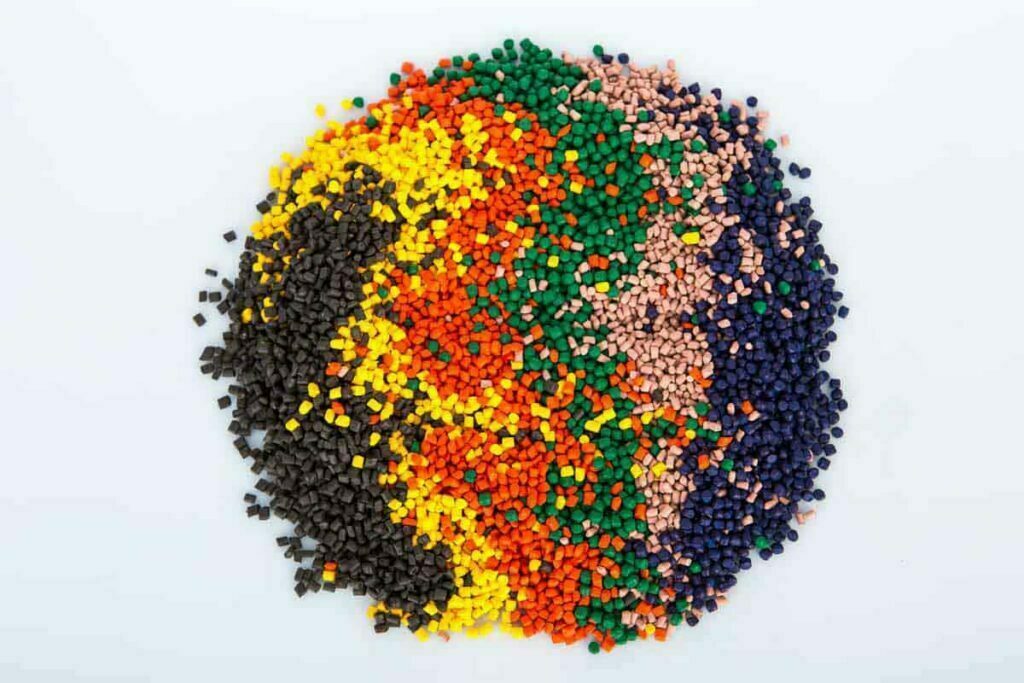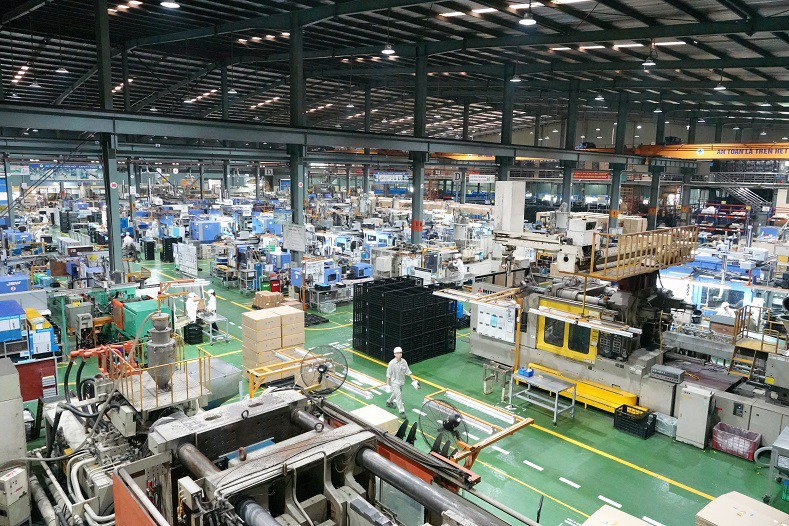Using masterbatch as the primary material in various industries has become a trend in recent years. But have you grasped the trend? Or the necessary measures to promote sustainable development in the plastic industry. The following article aims to provide information and address these concerns.
1. The current trend of using masterbatch
1.1. The role of masterbatch

Masterbatch, the primary material in producing plastic goods
Masterbatch is a type of small bead that plays a crucial role in the production of plastic goods. They provide physical properties for plastic products, including hardness, flexibility, durability, transparency, and color. The selection and combination of different types of masterbatch can create products with different characteristics.
Moreover, masterbatches can be customized to offer mechanical properties such as strength, elasticity, and impact resistance. This makes them suitable for fulfilling specific application requirements ranging from lightweight and soft goods to hard and load-bearing products. Additionally, masterbatches are classified into numerous types, and each type is suitable for specific applications in various fields.
1.2. The trend of using new masterbatches and additives
- The diversity of applications
Masterbatch can be used in many industries such as toy manufacturing, household goods, medical field, automotive industry, etc. This creates a significant potential market for plastic pellets in the future.
Masterbatch can be easily processed into various products. Compared to other materials, plastic pellets are popular because they are more cost-effective, easily accessible, and help improve production efficiency.
The use of masterbatch has raised significant environmental concerns, including plastic pollution, waste, and potential health effects. Therefore, proper plastic management and recycling are crucial to mitigate these negative impacts.
1.3. The scale and development of the global plastic industry
The plastic industry currently plays an important role in various aspects of life and industrial production. The global consumption of plastics is constantly on the rise. Statistics from the World Trade Organization (WTO) show that:
- In 2015, global plastic consumption reached about 322 million tons.
- By 2019, this number had increased to over 367 million tons, reflecting an average annual growth rate of 2.8%.
- The major markets in the world include Asia, Europe, and North America, which account for approximately 80% of total production.
Currently, there are many different types of plastics used globally, depending on the purpose and necessities of each industry. The most common type is polyethylene, accounting for roughly 35% of total production.
2. Technological innovations

Applying new machinery and technologies in the plastic recycling process
Plastic production and recycling have recently seen progress not only in Vietnam but also globally. To meet the needs of businesses and factories in this field, various machines, and technologies have been invented and developed. Recycling plastic is a complex process that requires different devices. Here are some commonly used machines for this field:
- Plastic crusher: This machine is used for pounding hard plastic sheets into small granules to facilitate the recycling process.
- Plastic washing machine: After sorting and shredding, the plastic granules are washed to remove dirt, impurities, and residual harmful chemicals.
-
Plastic recycling machine: This machine uses methods such as melting, extrusion, and molding to produce new recycled plastic products, including plastic bottles, bags, straws, toys, and other items.
- Quality inspection machine: This device is used to ensure that recycled plastic products meet the necessary quality standards before being introduced to the market.
Advanced plastic recycling technologies are commonly used today:
- Pyrolysis: Using high temperatures to break down plastics into valuable compounds, thereby increasing recycling efficiency.
- Depolymerization: This method breaks polymer bonds in plastics, allowing them to be recycled into new products.
- Advanced mechanical recycling: It utilizes modern equipment and machinery to separate plastic components and reuse them.
- Automated recycling: Using automated systems to sort and recycle plastics quickly and efficiently.
Advanced chemical recycling: Using chemical reactions to separate plastic components and reuse them.
- Solvent method: Using solvents to dissolve plastic components and reuse them.
- Advanced gasification: This method utilizes gas to separate plastic components while reusing them, thereby reducing waste and protecting the environment.
3. Future directions
The global plastic masterbatch market was valued at approximately $403.1 billion in 2019 and is expected to reach $522.5 billion by 2027, with a compound annual growth rate (CAGR) of 4.5% from 2020 to 2027. The diversity and wide range of applications of plastic pellets in various industries have created many opportunities for the development of this market.
- The trend of using plastic masterbatch
Plastic recycling: The trend of recycling and reusing plastic pellets is increasing. Therefore, many companies have utilized plastic materials to help reduce environmental impact and resource usage.
Construction plastics: The construction and real estate sectors are developing and driving demand for construction plastic products.
The plastic masterbatch market is showing positive signs of development and offers many opportunities for diversity and innovation in both application and manufacturing technology.
4. Conclusion
In conclusion, the plastics industry has experienced various trends and prospects which bring both new opportunities and challenges. It is important for us to continue promoting sustainable development and providing products and services that meet the needs of consumers worldwide. This will enable us to advance further and thrive in the industry.
5. Exploring EuroPlas's advanced plastic solutions
EuroPlas is a company that specializes in providing advanced plastic solutions to help businesses gain a competitive advantage and deliver high-quality plastic products to their customers. EuroPlas offers a range of advanced plastic solutions, which include Bio-based plastics, color masterbatch, plastic additives, engineering plastic compounds, filler masterbatch, and bio filler. Each solution has unique features that are suitable for most of the businesses' product needs. To learn more about EuroPlas's advanced plastic solutions, you can click on the link here.